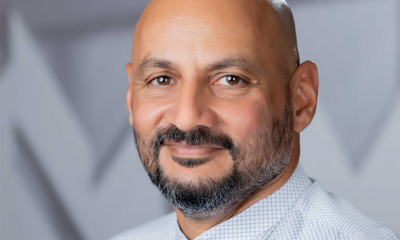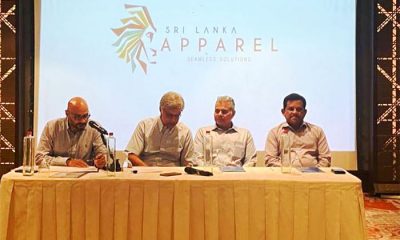Business
Taxation increase counter-productive to increasing exports, competitiveness – JAAF

‘Rebuilding Sri Lanka is a national priority and the government of Sri Lanka has aptly stated that the path to rebuilding the nation is in strengthening export-led growth. Sri Lanka’s merchandise exports currently are approximately USD 12 Bn annually, although the country really needs to notch exports closer to USD 20 Bn per annum to take the quantum leap into becoming a developed nation.
‘This will be particularly challenging given the contraction in Sri Lanka’s export markets. While apparel showcased commendable growth in the first eight months of 2022, the industry is now seeing a considerable decline in orders due to a range of global factors, a pattern which may continue indefinitely. Hence, looking at the paradigms unfolding globally, it is imperative that Sri Lanka remains competitive and offers potential and existing investors a competitive investor environment, the Joint Apparel Association Forum (JAAF) said in a press release.
Extracts from the release: ‘JAAF is deeply concerned by recent discussions for the removal of the concessionary rate granted to exporters, replacing this with a single rate of corporate taxation. This would mean the rate of corporate taxation doubling for exporters. The industry has been contributing 52 per cent to export revenue continually throughout the crisis, a contribution that is critical to keep the economy afloat, despite challenging internal and external factors. An additional rate of taxation will make the apparel industry very uncompetitive when compared with regional peers.
‘Until September 2022, apparel exporters were liable to pay a concessionary corporate income tax rate of 15 per cent (which was previously 14 per cent). However, aligned with the IMF staff-level agreement, the government tabled proposals in the 2022 interim budget to increase the standard corporate income tax rate to 30 per cent from 24 per cent, effective from the 1st of October 2022. JAAF is disturbed by this proposed increase as the apparel industry is already confronting a 25 per cent decline in its order books for Q4 of 2022 due to the softening of global markets.
‘The IMF in its Article IV Consultation in March, identified corporate and personal income tax exemptions (CIT and PIT) to have eroded the effectiveness of the 2017 Inland Revenue Act (IRA), paving the way to large revenue losses. This prompted the rationale to the current proposal to increase the corporate income tax rate. As Sri Lanka only collected 7.7 per cent of its GDP in taxes in 20211, the objective of the IMF is to increase revenue collection to finance social services, critical infrastructure and public goods.
‘JAAF fully understands and supports the need for the proposed tax reforms as the government is challenged for options to raise much-needed revenue. However, while the policy is well-intended, the resulting consequences are dire and may have disastrous outcomes for an industry that is striving to increase export income, local value addition, foreign direct investments, sustaining employee security and economic growth.
‘However, it is crucial that the government takes note of the following concerns prior to implementing the increase in corporate taxation for exporters to 30 per cent.
‘Firstly, export industries do not operate in isolation and are in constant fierce competition with regional competitors. This means that investors and buyers are actively conscious of the cost of doing business. Therefore, businesses rationalise the pros and cons and affirm business that would favour their operations. This may lead to shifting to countries offering lower costs of operation. Sri Lanka is already disadvantaged in comparison to regional peers who have better trade agreements and more liberal trade policies. Further tightening bottom lines for exporters to pay a CIT rate higher than that of Bangladesh, Vietnam, Thailand and Indonesia for example will hurt the country’s ability to remain competitive in this region.
‘Further, it is worthy to note that geographically smaller countries like Hong Kong, Singapore and Dubai are modelled on low taxes at early stages of economic growth. Even today, Singapore’s corporate income tax is imposed at a flat rate of 17 per cent with partial tax exemptions and a three-year start-up exemption extended to qualifying start-up companies. It is only larger economies like India with a sizeable domestic market that are able to impose higher tax rates than regional peers.
‘Increased corporate income taxes also carry the potential to discourage the value addition of existing export businesses. For example, businesses will have reduced incentive to further reinvest their reduced profits into research and innovation and other possible avenues for product diversification and product quality improvement. In the medium to long term, this may erode Sri Lanka’s hard-won position as a hub for sophisticated, innovative and ethics-based apparel manufacturing. With this, Sri Lanka also runs the risk of gaining the reputation of a cost centre model that doesn’t necessarily contribute to the profit-making process of a business but still incurs costs for low-value product creation.
‘A growing body of literature has established that higher taxes and higher compliance costs consistently drives more of the economy underground and beyond the reach of the tax collector. The National Bureau for Economic Research confirms this by reporting that as tax rates rise above the median level of 34 per cent, the extent of evasion rises dramatically. This research also found that on average, a 1 per cent increase in the tax rate results in a 3 per cent increase in tax evasion. Tax non-compliance and tax evasion historically have been major sources of revenue loss to the Sri Lankan government. The ‘Parliamentary Committee on Public Accounts (COPA) disclosed that the Inland Revenue Department has been deprived of approximately LKR 144 Bn just last year alone due to tax evasion. In this context, JAAF has severe concerns about the doubling of corporate tax rates at a time of extreme economic distress, which may prompt businesses to evade tax compliance which will deem the very intentions of this policy of increasing government revenue, counterproductive and redundant.
‘The apparel industry is already heading into uncertainty in the next few months due to rising inflation in the biggest export markets, disruptions in global supply chains and geopolitical tensions. Although the industry is confident that this is a temporary predicament and the industry has the capacity to emerge resilient, the timing is not necessarily be prudent and will create a further tough environment for exporters in terms of policy.
‘The apparel industry is determined to direct Sri Lanka into prosperity through the creation of a competitive export-oriented market economy. Therefore, JAAF urges the government to rethink the policy of increasing the corporate income tax rate by 100 per cent (which is from the concessionary 15 per cent to 30 per cent) allowing the apparel industry and all exporters to remain competitive and engage in business and investment in the region.
‘In conclusion, Secretary General of JAAF Yohan Lawrence says, “The apparel industry, which is the largest merchandise exporter reaffirms its commitment to continually support the government in its efforts to reduce the fiscal deficit. JAAF fully supports mechanisms and processes to improve the tax administration and collection and broadening of the tax base which will lead to Sri Lanka to redirect the path of recovery and growth.”
Business
Code of Ethics for capital market influencers in the pipeline

The Securities and Exchange Commission (SEC) of Sri Lanka is planning to introduce a Code of Ethics or a set of guidelines for the activities of capital market influencers to protect the public from ongoing scams involving the swindling money from potential investors in the share market.
“The market regulator has already identified Blue Ocean Securities Limited and Gladius South Asia as involved in such scams, which are being investigated by the relevant authorities, said Deputy Director General of the SEC Tushara Jayaratne.
The Deputy Director General also said that Gladius was using their their logo in a fraudulent manner to promote their business as well.
He said Blue Ocean has been involved in asking investors to start trading through an app named BOMate Nd. ‘Through this app, you can’t trade shares. But the money transaction goes through this app and the SEC system does not see these transactions, Jayaratne explained.
“The money is going somewhere else, Jayaratne told journalists at a media briefing yesterday held at the SEC auditorium, WTC building, Colombo.
Jayaratne said the SEC has already made complaints to both the Criminal Investigation Department (CID) of the police and the Financial Intelligence Unit (FIU) of the Central Bank.
The Deputy Director General said the second company, Gladius South Asia, has been involved in asking investors not to invest their money in the local stock market, but to do so in the markets in foreign countries.
He also said that the SEC has adopted 12 key capital market development projects to increase the number of capital market investors.
“The Introduction of a Code of Ethics and guidelines for registered investment advisers will help to develop the market in an efficient and effective way, he said.
Jayaratne, however, said that the Sri Lankan share market is not full of scams and that people can have confidence in the market.
“Our market is somewhat free and fair. From the perspective of investors, you also have a responsibility to be careful when investing in the market, he added.
By Hiran H Senewiratne
Business
Norway supports flood-affected communities in Sri Lanka

Norway is providing more than USD 2.4 million to assist those affected by severe flooding in Sri Lanka.
“Norway is contributing emergency assistance to people who have lost both their homes and livelihoods in Sri Lanka. A rapid response is crucial to ensure that those affected have shelter, food, healthcare and support to rebuild their communities,” said Norway’s Minister of International Development, Åsmund Aukrust.
The United Nations estimates that nearly 11 million people have been impacted by catastrophic floods and landslides across large parts of South and Southeast Asia. Sri Lanka, Indonesia, Thailand, Vietnam and Malaysia have experienced record rainfall since 17 November. In total, approximately 1,600 people have lost their lives, and 1.2 million have been forced to leave their homes. Critical infrastructure such as houses and roads has been destroyed, and health risks are increasing due to waterborne diseases and poor sanitation.
“Norway is now contributing NOK 20 million (approx. USD 2 million) to the Red Cross Movement and the UN system in Sri Lanka. These organisations have presence in the country and the capacity to respond quickly based on local needs,” Aukrust said.
Sri Lanka is among the hardest-hit countries. On 28 November, Cyclone Ditwah struck the country, bringing heavy rain and strong winds. The cyclone triggered landslides and caused the most severe floodsing in recent history. The Sri Lankan authorities have led the search and rescue operations and allocated significant resources for immediate relief. “When disasters of this magnitude occur, it is vital that the international community and countries like Norway step up and support local actors in managing the crisis,” Aukrust said.
In addition, the UN Central Emergency Response Fund (CERF) has allocated USD 4.5 million for flood response in Sri Lanka. Around one in ten dollars in the fund comes from Norway.
Norway is also assisting flood-affected communities in Sri Lanka through an immediate response mechanism in the World Food Programme (WFP). The International Labour Organization (ILO) has re-allocated around USD 100,000 in a Norway-funded job generation project, to assist flood-affected participants. Furthermore, Norway has funded a UN expert to help coordinate ongoing relief efforts in the affected areas.
Business
Janashakthi Finance appoints Sithambaram Sri Ganendran as CEO

Janashakthi Finance PLC, formerly known as Orient Finance PLC and a subsidiary of JXG (Janashakthi Group), announces the appointment of Sithambaram Sri Ganendran as the Chief Executive Officer.
Sri Ganendran, who has held the position of Chief Operating Officer since September 2024, stepped in as Acting Chief Executive Officer during the past four months.
He brings with him almost 27 years of extensive experience in banking. Throughout his extensive career, he has held senior management roles in multiple local and international banks, where he acquired in-depth knowledge in operations, branch banking (across retail and SME sectors), operational risk, business continuity management, business integration, process reengineering, operational excellence, sales governance and credit card operations. He holds a plethora of qualifications including an MBA from American City University. He is a Fellow of the Chartered Institute of Management Accountants (CIMA) in the United Kingdom, and an Associate Member of the Chartered Institute of Securities and Investments (CISI), and a member of the Association of Professional Bankers of Sri Lanka.
Rajendra Theagarajah, Chairman of Janashakthi Finance PLC, said, “We are delighted to welcome Sithambaram Sri Ganendran to this important leadership role at a pivotal moment in our journey. His wealth of experience, proven track record, and people-focused leadership style make him well suited to strengthen and guide Janashakthi Finance, ensuring efficient continuity in all ongoing operations.”
The appointment of Sri Ganendran as Chief Executive Officer, reinforces Janashakthi Finance’s deep commitment to seamless operations and growth. It also underscores its dedication to vision of delivering trusted financial solutions, while continuously exploring opportunities for innovation and expansion to serve its customers and communities more efficiently.
-

 Features5 days ago
Features5 days agoWhy Sri Lanka Still Has No Doppler Radar – and Who Should Be Held Accountable
-

 Features7 days ago
Features7 days agoDitwah: A Country Tested, A People United
-

 News16 hours ago
News16 hours agoPakistan hands over 200 tonnes of humanitarian aid to Lanka
-
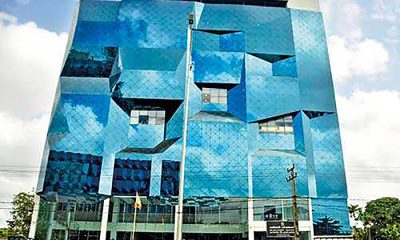
 News7 days ago
News7 days agoRs 1. 3 bn yahapalana building deal under investigation
-
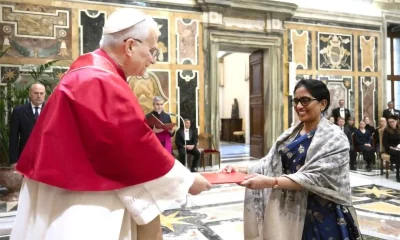
 News16 hours ago
News16 hours agoPope fires broadside: ‘The Holy See won’t be a silent bystander to the grave disparities, injustices, and fundamental human rights violations’
-

 Business7 days ago
Business7 days agoFluctuating fortunes for bourse in the wake of selling pressure
-

 Opinion7 days ago
Opinion7 days agoComfort for some, death for others: The reality of climate change
-
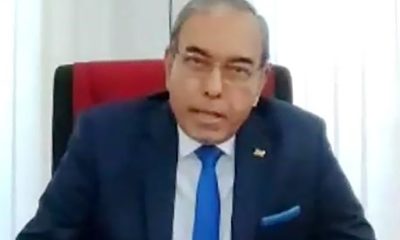
 News7 days ago
News7 days agoFormer SAARC SG Esala Weerakoon calls for ‘South Asian Climate Compact’


